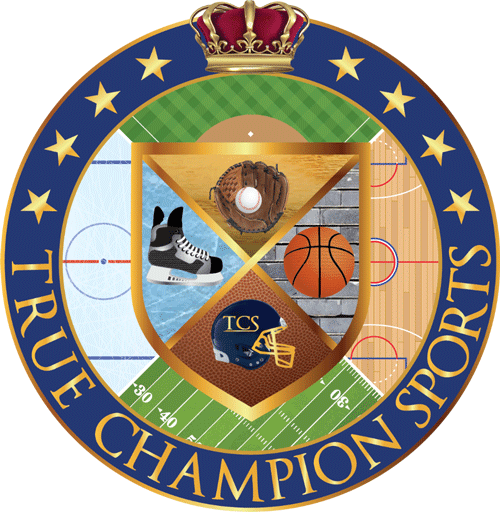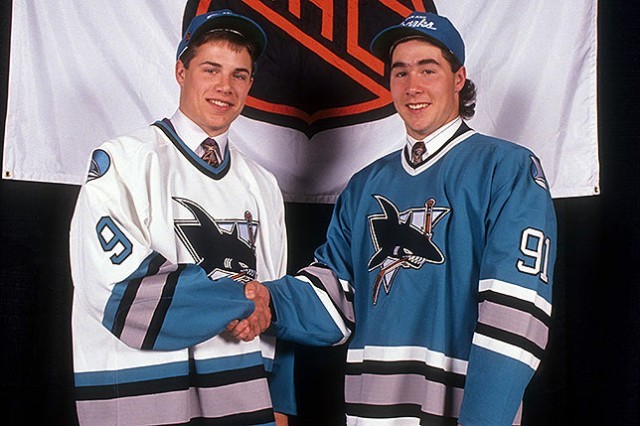It’s quite possible that in all of professional sports the San Jose Sharks have the most interesting back-story. The NHL would have you believe that the Sharks are the League’s 22nd franchise and were created as an expansion team in 1991. Although I respect their official stance, this is not the full truth, and the Sharks were far from a normal expansion team.
The Sharks lineage can be traced back all the way back to 1961, and are in a sense, the NHL’s 8th oldest continually franchise behind the Original 6 and the Vancouver Canucks.
Tracing back the Sharks’ Roots: An aside regarding the Western Hockey League (1952-1974)
The Western Hockey League does not seem to get any historical credit for being a professional-level League, but it’s my opinion that it ought to get a lot more than it does- specifically prior to the major NHL expansion in 1967. This league was so successful on the Western half of the continent, that it forced the NHL to act hastily and expand in 1967 with 6 new teams (which doubled the NHL’s size).
In 1966/67 the NHL was comprised of only the ‘Original 6’ teams. By 1974/75 with NHL expansion coupled with the up-start World Hockey Association, (which posed a serious threat to the NHL and eventually got 4 of its teams admitted into the League); professional hockey had grown from 6 teams to 32 in a matter of only 8 years!
Approximately 575 players were needed to make up these 26 new professional teams and they came primarily from 2 places: the Western Hockey League and the American Hockey League. So if we are going to consider the NHL in the 1970s without a major asterisk, we need to give a lot more historical credit and relevance to the Western Hockey League.
Two Western Hockey League teams were admitted into the NHL (more on that in a moment), and 2 also were admitted into the World Hockey Association- the Phoenix Roadrunners and the Denver Spurs. The NHL had granted another WHL team, the Seattle Totems, a ‘conditional NHL franchise’, but that fell through.
One of the teams that was admitted from the Western Hockey League was the California Seals. For their inaugural NHL season in 1967/68, the Seals had 5 players who were on their team the prior season in the WHL.
A few years later another WHL team was admitted into the NHL- the Vancouver Canucks. They had 7 players on their inaugural NHL team in 1970/71 who were members of their final WHL roster.
Now back to the Sharks’ Lineage…
So as stated at the top of this article, the Sharks’ lineage can be traced back to 1961. They began play in the Western Hockey League as the San Francisco Seals. The team changed its name for their final WHL season in 1966/67 to the California Seals, and then was given entrance into the NHL the following season.
During their WHL years, the team played at the Cow Palace in Daly City- (Daly City borders San Francisco’s south side.) In preparation for their plan to join the NHL, new owner Garry Van Gerbig, moved the team across the Bay to play in the new state-of-the- art arena in Oakland – the O.A.C.C.A., now known as Oracle Arena.
The team changed its name to the California Seals for their final WHL season, and then again changed its name to the Oakland Seals 1 month into their 1st NHL season.
In the NHL the Seals struggled on and off the ice, and in 1970 the team yet again changed its name, this time to the California Golden Seals.
The Golden Seals Relocation to Cleveland
With the team struggling on and off the ice in Oakland, minority owners at the time, George and Gordon Gund convinced primary owner Melvin Swig to relocate the team to Cleveland. (Not-so-coincidentally the Gund brother’s hometown).
The Seals moved to Cleveland and became the Cleveland Barons. After struggling on and off the ice for 2 years in Ohio, the NHL record books would tell you that the Barons folded- however, this is far from the truth.
By the time the Barons were in major trouble in Cleveland, the Gund brothers had become the majority owners. One of their expansion cousins from 1967/68 was also struggling mightily- the Minnesota North Stars. The case was very bleak for both franchises, and their futures were in real jeopardy.
The North Stars' ownership was not as strong as the Gund brothers and the NHL provided the two teams a unique and unprecedented solution:
The teams would be allowed to merge, with the Gunds gaining ownership of the newly merged team, and would have the authority to decide where the team continued, how it would be known, and which Division it would play in – (given the option of the North Stars’ place in the Smythe Division- Campbell Conference, OR the Barons’ place in the Adams Division- Wales Conference.)
The Gunds thought their best chance for success was to continue the North Stars tradition in Minnesota, however, strategically chose to keep the Barons’ divisional placement.

